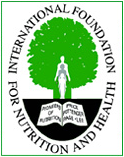Dr. D. C. Jarvis was a prominent medical doctor who headed the Jarvis study group and authored Folk Medicine: A Vermont Doctor’s Guide to Good Health. The book, and many of the traditional remedies in it, was the subject for discussion and observation for the group.
Dr. Lee and Dr. Melvin Page were both part of the Jarvis study group, consisting of practitioners and researchers. They both believed in the principal that food was therapeutic, and in pursuit of that principle, they both found themselves under government scrutiny and pressure in the 50s, stemming from their outspoken view about whole food nutrition and its therapeutic value.
This article has all the earmarks of the Jarvis study group. I can almost hear Dr. Lee discussing the nutritional merits of the goosefoot family to this astute group.
Royal Lee, D.D.S. 1952
The broad, thick, chlorophyll-rich green leaves of the Goosefoot family— beet, spinach, and chard—provide one of the richest sources of life-giving foods that’s readily available. However, dietitians who study ordinary food analysis charts formulated on the basis of the total content may be led to false conclusions, as these usually show a relatively low (two or three percent) protein content. Actually, the solids run about 10 percent, and if we analyze this solid material, we now find that the protein content is high, averaging 24 to 46 percent of the ash minerals. (P.215, Chemistry and Technology of Foods). So, if you want to increase the protein in your diet and you’re a vegetarian, eat plenty of fresh, green-leafy vegetables from this unique family.
Iron and its Synergists
Garden beets are one of the richest storehouses of assailable iron. In one list of several hundred food sources of iron, beets stood in fourth place – exceeded only by dry beans, soybeans and parsley (highest). When you consider the low-starch content of beets and evaluate other vegetable sources of iron, beets have the highest level compared to other food sources of iron. Also, you may recall that the juice of beets is acidic due to the presence of organic acids (including citric, malic, tartaric, malonic, and others), and that iron is best absorbed in an acid medium, the natural environment afforded by beet juice. Copper is also necessary for the utilization of iron and is present in beets in a significant amount.
Organic Mineral Source
Iodine (depending on soil), manganese, silica, chlorine, potassium and zinc are all present in these leafy green vegetables. Zinc is particularly important in carbohydrate metabolism, being necessary for the formation of enzymes, which utilize sugars and starches as they go through changes in the body – called intermediate processes. It is zinc which seems to potentiate the action of insulin.


Comments are closed.